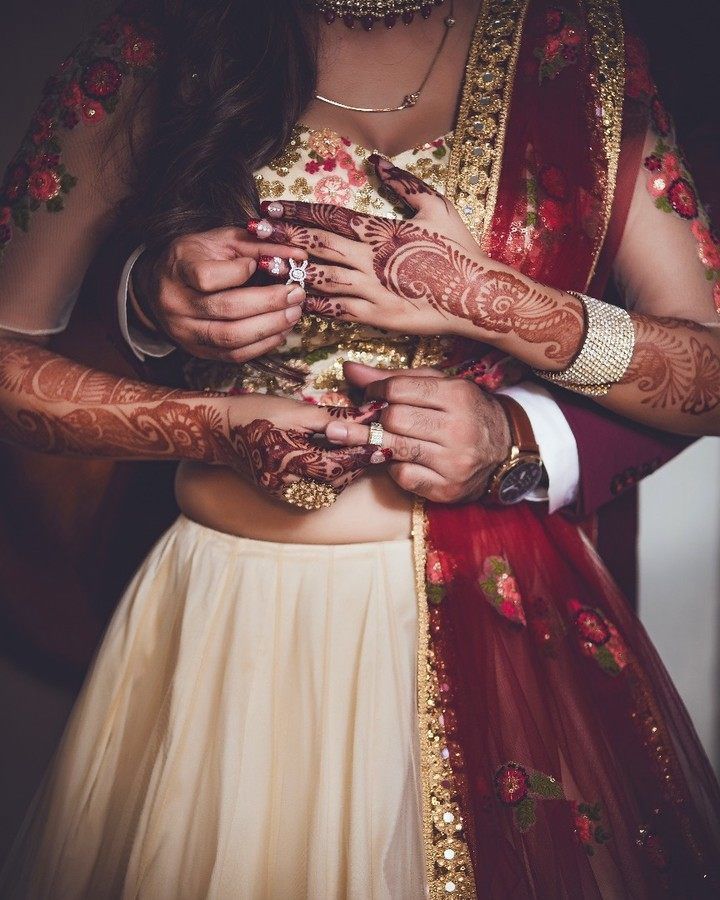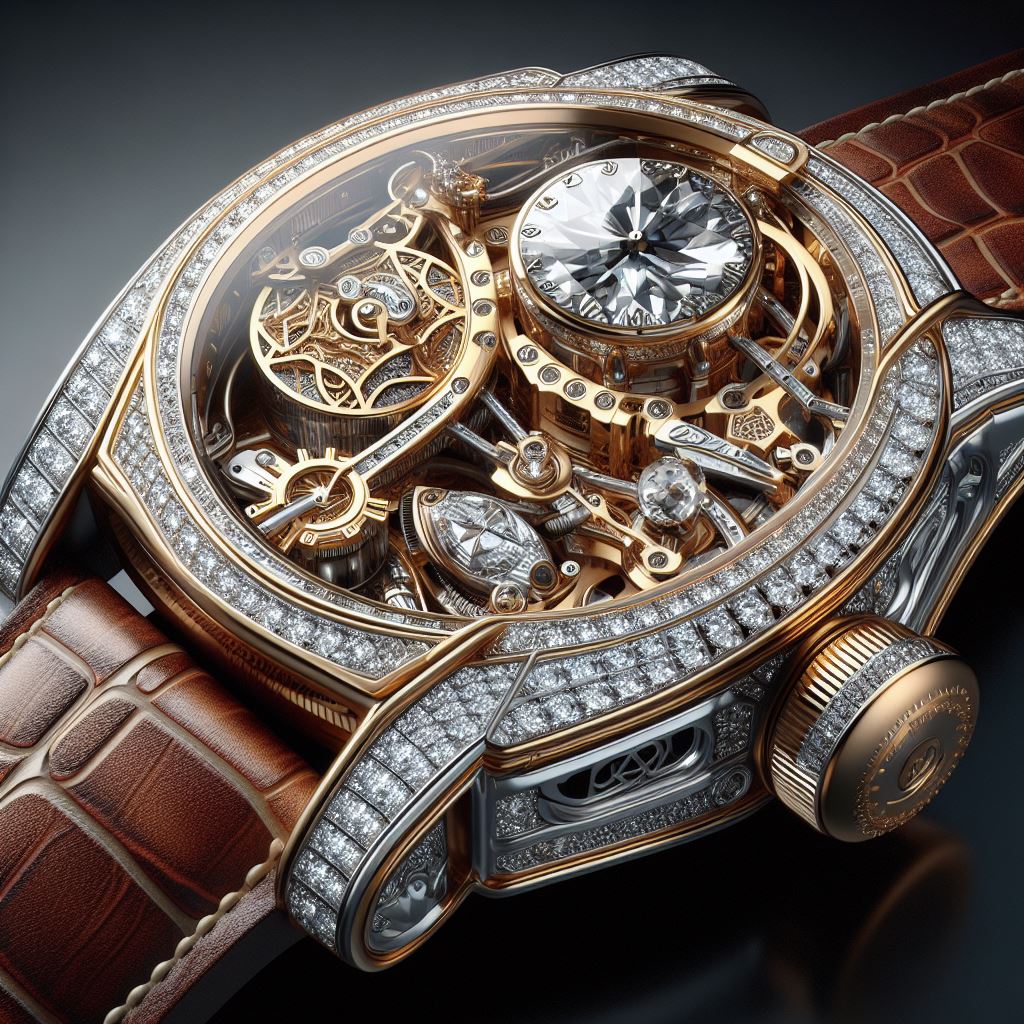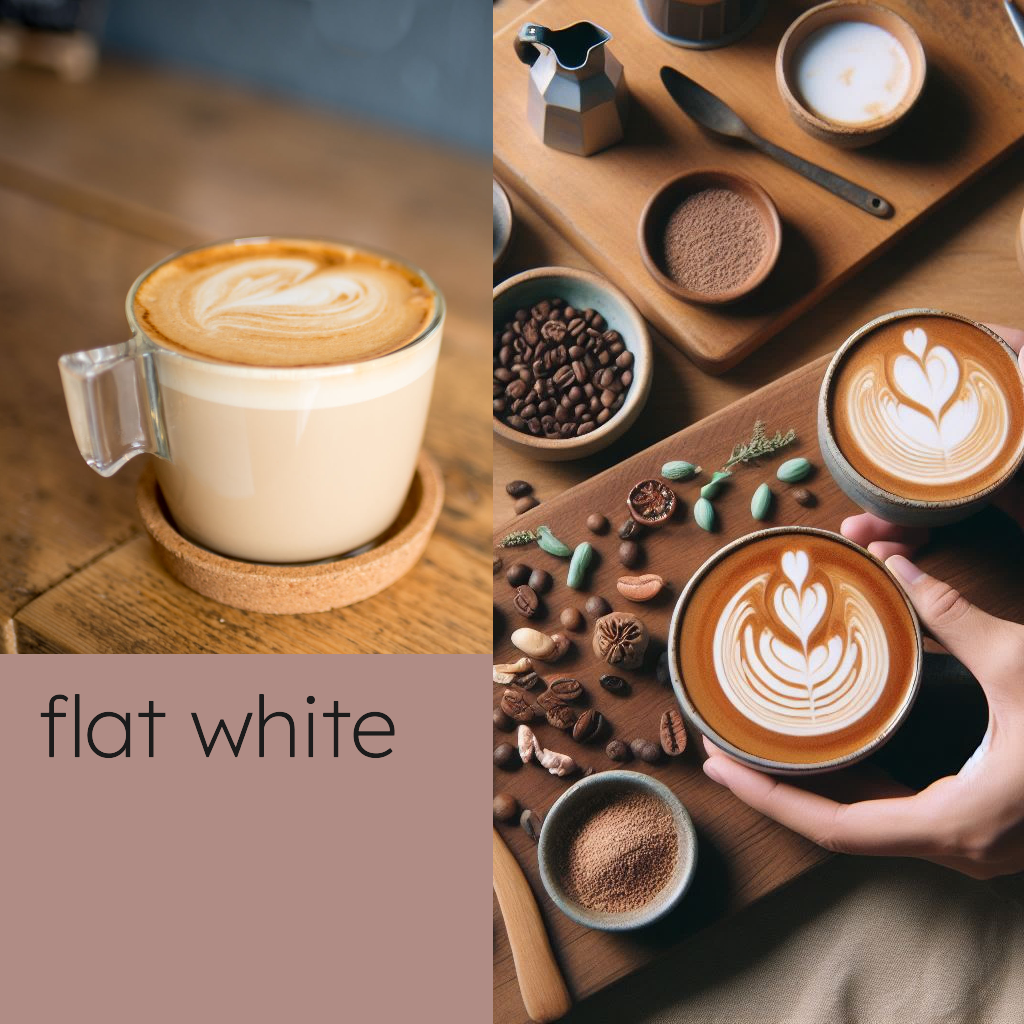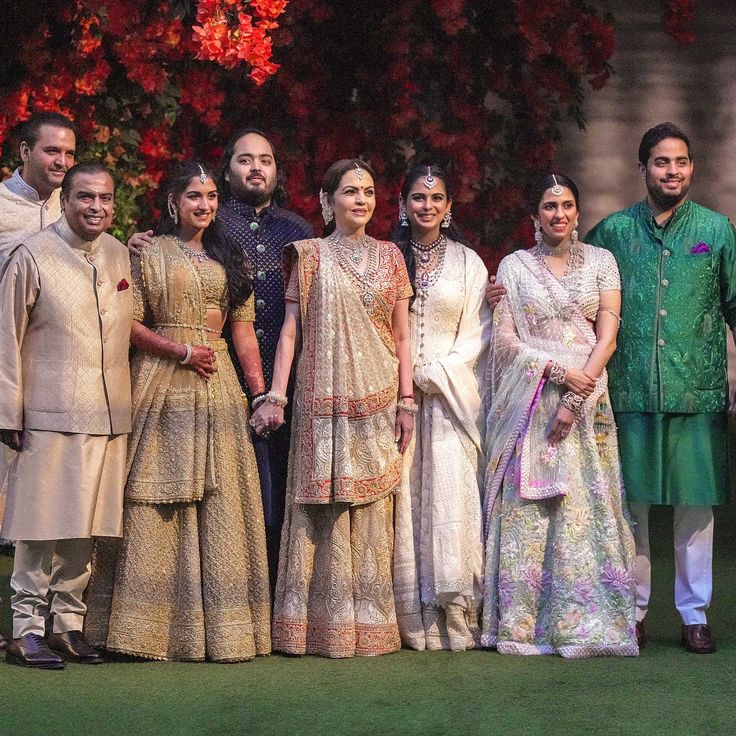Demand of interior design in the world
Trends and demands in the field can change over time due to various factors such as economic conditions, cultural shifts, and technological advancements.
Several factors contribute to the demand for interior design:
- Real Estate and Construction Boom: Economic growth and increased construction activities often lead to a higher demand for interior design services. As new buildings are constructed, there is a need for well-designed interiors.
- Renovation and Remodeling: Homeowners and businesses frequently seek interior designers when renovating or remodeling their spaces. This can be driven by changing tastes, functional needs, or the desire to update outdated designs.
- Commercial Spaces: The demand for interior design extends beyond residential properties to commercial spaces such as offices, hotels, restaurants, and retail stores. Businesses recognize the importance of creating appealing and functional spaces to attract customers and improve employee productivity.
- Focus on Wellness and Sustainability: There is an increasing awareness of the impact of the built environment on well-being. Interior designers who incorporate principles of wellness and sustainability into their designs may find a growing demand for their services.
- Technological Advances: Technology, such as virtual reality (VR) and augmented reality (AR), has started to play a role in interior design. Clients may seek designers who can provide immersive experiences or use technology to visualize designs before implementation.
- Globalization: As the world becomes more interconnected, there is a growing appreciation for diverse design styles and cultural influences. Interior designers with a global perspective may find opportunities to work on projects that incorporate a variety of design elements.
Table of Contents
The demand for interior design is steadily increasing on a global scale, driven by several factors:
- Rising disposable income: As economies grow and living standards improve, people have more money to spend on discretionary items like home improvement and decoration.
- Urbanization: The increasing concentration of people in cities is leading to a higher demand for smaller living spaces, which need to be optimized for functionality and aesthetics.
- Focus on well-being: People are becoming more aware of the impact of their environment on their well-being, and are seeking to create homes that are comfortable, relaxing, and inspiring.
- Personalization: There is a growing trend towards personalization, and people are looking for ways to make their homes reflect their unique style and personality.
- Technology: Advances in technology are making it easier and more affordable to design and furnish homes. For example, online platforms allow people to browse and purchase furniture and decor from around the world.
The growth of the interior design market is reflected in the following statistics:
- The global interior design market is expected to reach USD 161.1 billion by 2027, growing at a CAGR of 4.87%.
- The Asia Pacific region is expected to be the fastest-growing market, driven by the economic growth of countries like China and India.
- The luxury interior design market is also expected to grow at a healthy rate, as wealthy individuals increasingly invest in high-end design services.
The demand for interior designers is also increasing, as people recognize the value of professional expertise in creating beautiful and functional spaces. Interior designers can help clients with a variety of tasks, such as:
- Developing a design concept
- Selecting furniture and finishes
- Creating space plans
- Managing budgets and timelines
The job outlook for interior designers is positive, with the Bureau of Labor Statistics projecting a 7% growth in employment from 2020 to 2030.
Overall, the demand for interior design is expected to continue to grow in the coming years, driven by a combination of economic, social, and technological factors. This is a positive sign for the interior design industry and for those who are considering a career in this field.
Here are some additional factors that are influencing the demand for interior design:
- Sustainability: There is a growing demand for sustainable design practices, as people become more aware of the environmental impact of their choices.
- Technology: Virtual reality and augmented reality are being used to create immersive design experiences, which can help clients visualize their finished spaces.
- E-commerce: The rise of online shopping is making it easier for people to find and purchase furniture and decor from around the world.
These factors are all contributing to the evolution of the interior design industry, and they are likely to continue to shape the demand for interior design services in the future.
To get the most accurate and up-to-date information on the current demand for interior design, it’s recommended to refer to industry reports, market analyses, and professional associations in the field. Keep in mind that regional variations and economic conditions can also impact the demand for interior design services.
Top 30 Interior Design Countries
Determining the top 30 interior design countries in the world is subjective and depends on various factors like design history, cultural influences, contemporary trends, and individual preferences. However, here are 30 countries renowned for their significant contributions to the world of interior design, listed in alphabetical order:
- Argentina: Known for its bold use of color, textured walls, and eclectic mix of European and Latin American influences.
- Australia: Embraces a relaxed, coastal aesthetic with natural materials, clean lines, and emphasis on outdoor living.
- Belgium: Renowned for its Art Deco heritage, minimalist Scandinavian-inspired designs, and focus on functionality.
- Brazil: Showcases vibrant colors, tropical patterns, and unique handcrafted furniture, blending Portuguese and indigenous influences.
- Canada: Combines natural elements with modern accents, often featuring clean lines, exposed wood, and pops of color.
- China: Offers a vast array of styles, from traditional Ming Dynasty aesthetics to contemporary high-tech interiors.
- Colombia: Blends colonial architecture with vibrant colors, artisanal textiles, and lush greenery.
- Denmark: Pioneered the minimalist “hygge” style, emphasizing functionality, natural materials, and cozy atmospheres.
- France: Celebrated for its elegant and sophisticated interiors, often featuring classic furniture, antiques, and rich textures.
- Germany: Known for its Bauhaus-inspired approach, emphasizing clean lines, geometric shapes, and functionality.
- Greece: Features whitewashed walls, blue accents, natural materials, and traditional elements inspired by its Mediterranean heritage.
- India: Showcases a rich tapestry of styles, from Mughal-inspired opulence to vibrant textiles and handcrafted furniture.
- Indonesia: Blends traditional craftsmanship with modern elements, featuring natural materials like bamboo and intricate wood carvings.
- Italy: Renowned for its timeless elegance, showcasing classic furniture, marble accents, and intricate details.
- Japan: Pioneered minimalist Wabi-sabi aesthetics, emphasizing natural materials, simplicity, and imperfect beauty.
- Mexico: Features vibrant colors, handcrafted tiles, traditional textiles, and a blend of indigenous and Spanish influences.
- Morocco: Known for its intricate tilework, colorful accents, and rich textures, inspired by Islamic and Berber traditions.
- Netherlands: Embraces a minimalist Dutch design aesthetic, featuring clean lines, functionality, and pops of color.
- New Zealand: Showcases a relaxed, natural aesthetic with emphasis on sustainable materials, open spaces, and connection to nature.
- Norway: Combines Scandinavian minimalism with cozy elements, featuring natural materials, warm textures, and pops of color.
- Portugal: Blends Moorish and Mediterranean influences, featuring colorful tiles, hand-painted ceramics, and rustic charm.
- Singapore: Embraces a modern, cosmopolitan aesthetic with high-tech elements, clean lines, and luxurious materials.
- South Africa: Showcases a unique blend of African influences, colonial architecture, and contemporary design elements.
- Spain: Renowned for its bold use of color, intricate tilework, and blend of Moorish, Baroque, and contemporary styles.
- Sweden: Pioneered the minimalist Scandinavian design, featuring clean lines, natural materials, and functional furniture.
- Thailand: Blends traditional elements with modern influences, featuring intricate carvings, silk textiles, and colorful accents.
- Turkey: Showcases Ottoman-inspired opulence with rich textiles, handcrafted woodwork, and intricate tilework.
- United Kingdom: Offers a diverse range of styles, from traditional English country houses to modern urban lofts.
- United States: Embraces a melting pot of styles, from coastal California bungalows to New York City penthouses.
- Vietnam: Blends French colonial influences with traditional Vietnamese elements, featuring natural materials, dark wood accents, and pops of color.
16. Exploring the Rich Tapestry of Mexican Interior Design: A Fusion of Tradition and Elegance
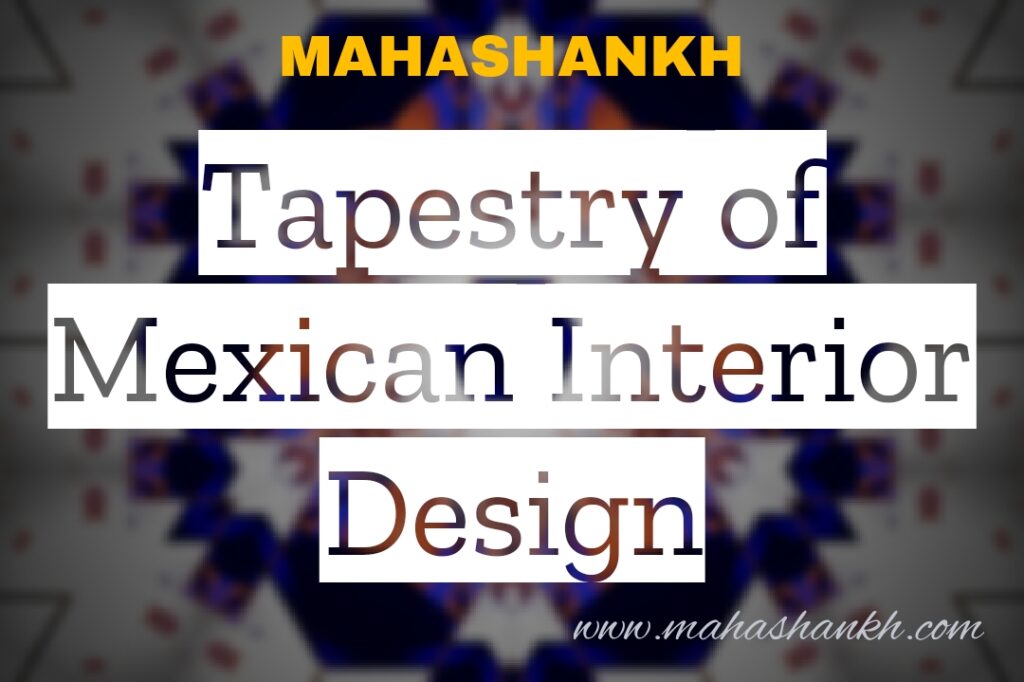
Mexico, a country renowned for its vibrant culture and diverse history, has made a profound impact on the world of interior design. The distinctive aesthetic that characterizes Mexican interiors is a captivating blend of vibrant colors, intricate handcrafted tiles, traditional textiles, and a harmonious fusion of indigenous and Spanish influences. In this article, we will delve into the unique features that define Mexican interior design, creating spaces that exude warmth, charm, and a deep connection to the country’s rich heritage.
Vibrant Colors:
One of the most striking aspects of Mexican interior design is the bold and lively color palette that dominates spaces. Inspired by the vibrant hues found in nature, Mexican interiors often feature a kaleidoscope of colors such as deep reds, terracottas, yellows, blues, and greens. These colors are not only visually stunning but also reflect the energy and passion deeply embedded in Mexican culture. Whether it’s the cheerful tones of Talavera tiles or the vivid hues of woven textiles, color plays a pivotal role in creating an inviting and dynamic atmosphere.
Handcrafted Tiles:
Mexican tiles, particularly the renowned Talavera tiles, are a hallmark of the country’s interior design. These hand-painted ceramic tiles boast intricate patterns, geometric shapes, and vibrant colors that tell stories of Mexican craftsmanship. From kitchen backsplashes to decorative elements on stair risers and walls, Talavera tiles infuse spaces with a sense of authenticity and history. The meticulous artistry involved in creating these tiles adds a touch of elegance to any interior.
Traditional Textiles:
The use of traditional textiles, such as serapes, rebozos, and embroidered fabrics, is another key feature of Mexican interior design. These textiles showcase the rich cultural heritage of indigenous communities, incorporating bold patterns and symbolic motifs. Vibrant textile artistry is often displayed in items like throw pillows, blankets, and wall hangings, bringing warmth and character to living spaces.
Indigenous and Spanish Influences:
Mexican interior design is a harmonious fusion of indigenous and Spanish influences, reflecting centuries of cultural exchange. From rustic wooden furniture reminiscent of colonial Spanish haciendas to the use of indigenous materials like adobe and clay, the blend is seamless. Arched doorways, wrought-iron details, and hand-carved wooden furnishings contribute to an aesthetic that seamlessly integrates the best of both worlds.
Mexican interior design is a celebration of color, craftsmanship, and cultural diversity. It weaves together a tapestry of traditions, creating spaces that are not only aesthetically pleasing but also deeply rooted in history. The vibrant colors, handcrafted tiles, traditional textiles, and the synthesis of indigenous and Spanish influences all contribute to an inviting and distinctive style that continues to captivate admirers around the world. Embracing Mexican design elements in your own space can bring a touch of the country’s rich cultural heritage into your daily surroundings, creating an environment that is both visually stunning and emotionally resonant.
17. The Enchanting World of Moroccan Interior Design: A Tapestry of Intricate Tilework, Vibrant Accents, and Rich Textures
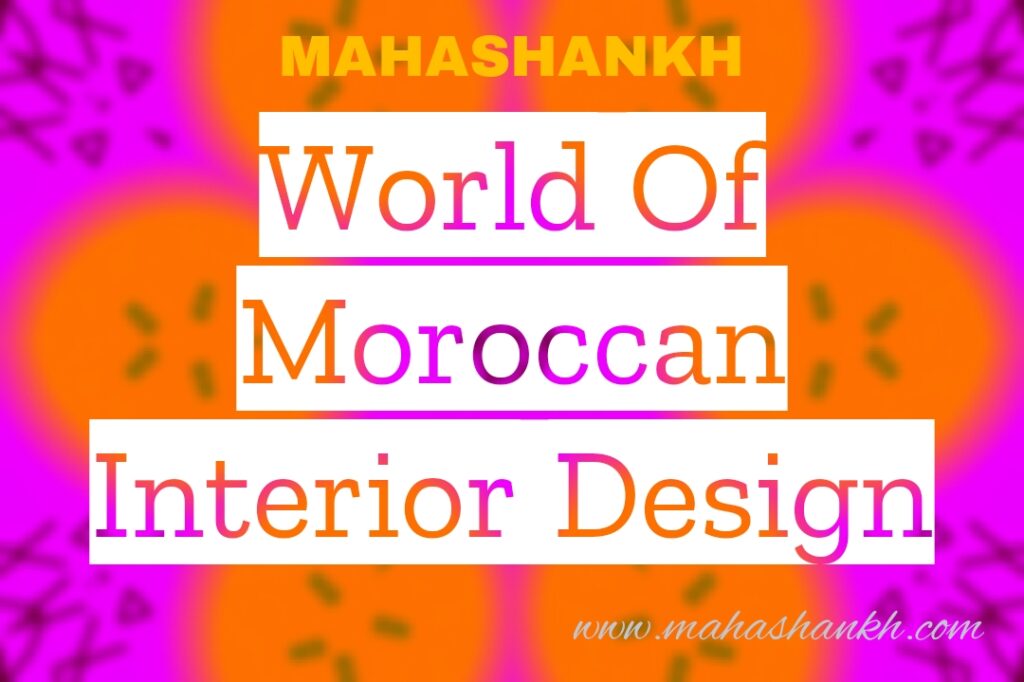
Morocco, a country nestled in the crossroads of Africa and the Middle East, is renowned for its mesmerizing interior design that reflects a rich tapestry of Islamic and Berber traditions. Steeped in history and cultural influences, Moroccan interiors are characterized by intricate tilework, colorful accents, and a sumptuous blend of textures. In this article, we’ll take a journey through the distinctive features that make Moroccan interior design a captivating and timeless art form.
Intricate Tilework:
One of the most iconic elements of Moroccan interior design is the exquisite tilework that adorns walls, floors, and architectural features. Zellige tiles, with their geometric patterns and vibrant colors, are a hallmark of Moroccan craftsmanship. These small, hand-cut tiles are meticulously arranged to create intricate mosaics that tell stories of ancient artistry. Whether covering walls in a riad or forming the mosaic patterns of a courtyard fountain, Zellige tiles bring a sense of refinement and sophistication to Moroccan interiors.
Colorful Accents:
Moroccan design is synonymous with a bold and vibrant color palette that reflects the country’s rich cultural heritage. Deep blues, vibrant reds, earthy browns, and golden yellows are commonly used to evoke the hues of Morocco’s landscapes and traditions. Colorful accents manifest in various forms, from ornate textiles and patterned rugs to intricately painted furniture and vibrant ceramics. The use of color in Moroccan interiors is not just aesthetic; it symbolizes the vitality and spirit of the culture.
Rich Textures:
Moroccan design embraces a sensory feast of textures, creating spaces that are as inviting to the touch as they are to the eye. Plush cushions and ornate fabrics adorn seating areas, while textured wall coverings add depth to interiors. Traditional Moroccan rugs, such as Beni Ourain, with their soft, high-pile wool, bring warmth and comfort to living spaces. The layering of textures contributes to the overall sensory experience, making Moroccan interiors both visually and tactilely stimulating.
Inspired by Islamic and Berber Traditions:
Moroccan interior design draws inspiration from both Islamic and Berber cultural traditions. Arabesque patterns, often seen in the intricate carvings of wooden furniture and metalwork, pay homage to Islamic art. Berber influences manifest in the use of tribal motifs, natural materials, and the incorporation of handwoven textiles. The synthesis of these influences results in interiors that seamlessly blend the spiritual and the earthly, creating a harmonious and culturally rich environment.
Moroccan interior design is a celebration of artistry, color, and cultural heritage. Its distinctive features, from intricate tilework to vibrant accents and rich textures, transport individuals to a world where tradition and modernity coexist seamlessly. The warmth and hospitality inherent in Moroccan design have made it a global inspiration, influencing contemporary interiors around the world. Embracing the essence of Moroccan style in your own space allows you to infuse a sense of exotic allure and timeless elegance into your home, creating an environment that resonates with the enchanting spirit of Morocco.
Embracing Dutch Design: The Minimalist Beauty of Interior Design in the Netherlands

The Netherlands, a country known for its rich cultural heritage and progressive design sensibilities, has given rise to a distinctive interior design aesthetic that reflects the Dutch commitment to simplicity, functionality, and innovation. Dutch interior design is characterized by a minimalist approach that features clean lines, functional spaces, and carefully chosen pops of color. In this article, we will explore the key elements that define the elegant and modern interior design of the Netherlands.
Clean Lines and Simplicity:
At the core of Dutch interior design is a commitment to simplicity and clean lines. Spaces are often characterized by uncluttered layouts, where every element serves a purpose and contributes to a sense of order and tranquility. Furniture designs embrace sleek lines and geometric shapes, creating a minimalist aesthetic that is both timeless and contemporary. This emphasis on simplicity allows for a sense of openness and lightness in interiors.
Functionality as a Priority:
Dutch interior design places a strong emphasis on functionality and practicality. Furniture and decor serve a purpose beyond aesthetics, with a focus on creating spaces that are efficient and conducive to daily living. Multi-functional furniture pieces are common, offering solutions that maximize space and usability. The Dutch commitment to practicality is reflected in the integration of storage solutions, smart furniture layouts, and the use of space-saving design elements.
Pops of Color:
While Dutch design often leans towards neutral and monochromatic color palettes, pops of color are strategically employed to add personality and vibrancy to interiors. A signature feature of Dutch interiors is the use of bold, primary colors such as cobalt blue, red, and yellow. These bursts of color are often introduced through furniture, artwork, or accent pieces, creating a visually dynamic contrast against the backdrop of neutral tones.
Natural Materials and Sustainability:
Dutch interior design frequently incorporates natural materials, emphasizing a connection to nature and sustainability. Wooden floors, stone surfaces, and tactile materials like wool and linen are commonly used to add warmth and texture to interiors. Sustainability is a key consideration, with an increasing focus on eco-friendly materials and energy-efficient design practices.
Light and Open Spaces:
The Dutch appreciation for natural light is evident in the design of interiors that prioritize large windows and open spaces. Light-colored walls and reflective surfaces contribute to a bright and airy atmosphere, amplifying the impact of natural light. This design choice not only enhances the visual appeal of spaces but also promotes a sense of well-being and connection to the outdoors.
Dutch interior design stands as a testament to the country’s commitment to innovation, functionality, and aesthetic sophistication. The marriage of clean lines, functionality, pops of color, natural materials, and a dedication to sustainability creates interiors that are both visually appealing and highly livable. Whether in a canal-side apartment in Amsterdam or a modern residence in Rotterdam, the Dutch design ethos continues to inspire a global audience, proving that simplicity and beauty can coexist harmoniously in the world of interior design.
A Breath of Fresh Air: The Serene Beauty of New Zealand Interior Design

New Zealand, a land of breathtaking landscapes and a deep connection to nature, has inspired a distinctive interior design aesthetic that reflects the country’s laid-back lifestyle and commitment to sustainability. Characterized by a relaxed, natural aesthetic, New Zealand interior design places a strong emphasis on incorporating sustainable materials, open spaces, and a seamless connection to the surrounding natural environment. In this article, we’ll explore the key elements that define the serene and eco-conscious interior design of New Zealand.
Embracing Nature:
At the heart of New Zealand interior design is a profound connection to nature. Homes are often designed to maximize views of the stunning natural landscapes, whether it be mountains, forests, or coastal vistas. Large windows and open floor plans allow for an unobstructed flow between indoor and outdoor spaces, creating a sense of harmony with the surroundings. The use of natural materials, such as timber and stone, further reinforces this connection to the environment.
Sustainable Materials:
New Zealand’s commitment to environmental sustainability is reflected in the choice of materials used in interior design. Locally sourced and renewable materials, such as reclaimed wood, recycled metals, and eco-friendly textiles, are popular choices. Designers prioritize materials with low environmental impact, embracing a holistic approach that aligns with the country’s dedication to preserving its natural resources.
Open Spaces and Airiness:
New Zealand interiors often feature open layouts that contribute to a sense of spaciousness and airiness. High ceilings, uncluttered spaces, and a minimalistic approach to furnishings create an inviting atmosphere. The design philosophy encourages a flow of natural light and fresh air, promoting a healthy and uplifting environment within the home.
Relaxed Aesthetic:
The Kiwi lifestyle is known for its laid-back and casual vibe, and this is reflected in the interior design ethos of New Zealand. Comfortable and inviting furniture, often with a touch of rustic charm, invites residents and guests to unwind and enjoy the tranquil surroundings. Soft, neutral color palettes dominate, allowing the natural beauty of the landscapes to take center stage.
Integration of Maori Cultural Influences:
New Zealand’s Maori culture, with its rich traditions and artistry, plays a significant role in shaping the country’s interior design. Elements of Maori design, such as intricate carvings, woven textiles, and symbolic motifs, are often incorporated into contemporary interiors. This integration adds a unique and culturally rich layer to the design narrative.
Connection to Water:
Given New Zealand’s abundance of lakes, rivers, and coastline, water features prominently in interior design. Whether it’s the sound of a nearby stream, the view of a tranquil lake, or the incorporation of water-inspired elements in decor, the connection to water enhances the overall sense of serenity and tranquility in New Zealand interiors.
New Zealand interior design beautifully encapsulates the essence of the country’s natural beauty, sustainable ethos, and cultural richness. The relaxed aesthetic, emphasis on sustainable materials, open spaces, and connection to nature create homes that are not just visually appealing but also conducive to a balanced and harmonious way of living. As the world increasingly recognizes the importance of sustainable design, New Zealand’s interior design principles serve as an inspiring model for creating homes that are not only beautiful but also aligned with the values of environmental stewardship and well-being.
The Art of Hygge: Exploring the Inviting Interior Design of Norway
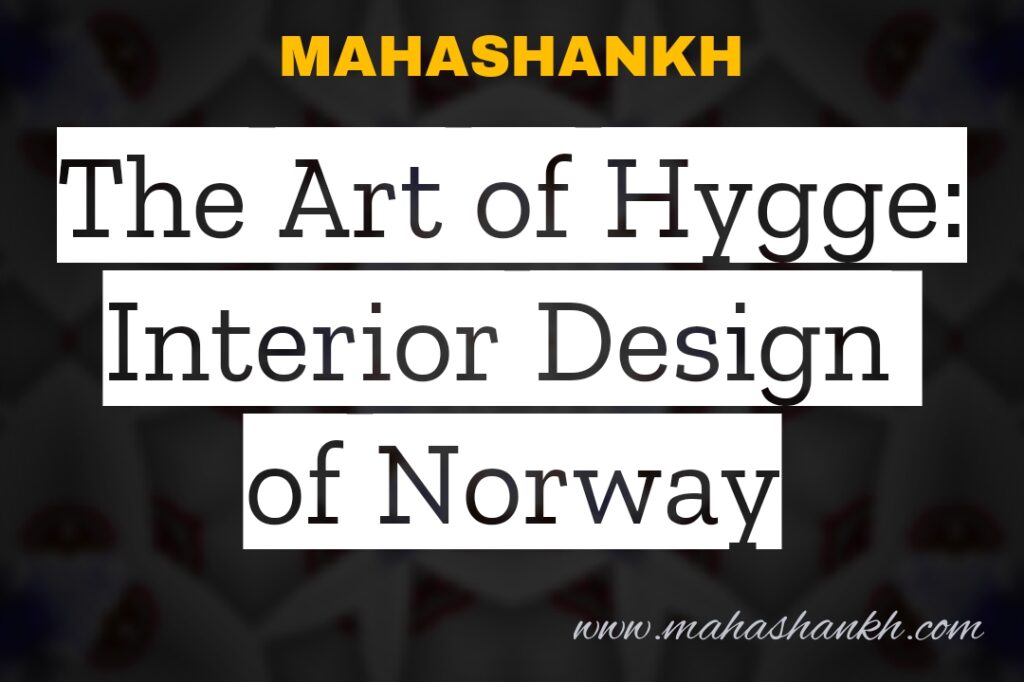
Nestled amidst the stunning landscapes of fjords and mountains, Norway boasts an interior design aesthetic that seamlessly merges the clean lines of Scandinavian minimalism with warm, cozy elements. The Norwegian approach to interior design is a celebration of simplicity, functionality, and a deep connection to nature. In this article, we’ll delve into the key features that define the inviting and harmonious interiors of Norway, where Scandinavian minimalism meets the comforting embrace of hygge.
Scandinavian Minimalism:
Norwegian interior design draws heavily from the broader Scandinavian design ethos, characterized by its emphasis on simplicity, clean lines, and a neutral color palette. Interiors often feature light-colored walls, understated furnishings, and an overall sense of openness. The minimalist approach creates spaces that are uncluttered, allowing for a calm and serene atmosphere that reflects the tranquility of Norway’s natural surroundings.
Cozy Elements and Hygge:
While Scandinavian minimalism lays the foundation, Norwegian interiors go a step further by embracing the concept of hygge. Hygge, a Danish term that embodies a sense of coziness and comfort, is seamlessly woven into the design narrative. Soft textiles, plush rugs, and warm throws are strategically placed to add layers of comfort to living spaces. The goal is to create an atmosphere that invites relaxation and fosters a feeling of contentment, especially during Norway’s long winters.
Natural Materials and Textures:
Norwegian interior design places a strong emphasis on bringing the outdoors in. Natural materials such as wood, stone, and leather are key elements that add warmth and authenticity to spaces. Wooden furniture, in particular, often showcases the beauty of natural grains, creating a connection to the country’s forests. Textures play a vital role as well, with the inclusion of fur, wool, and other tactile materials enhancing the sensory experience and contributing to the overall coziness.
Pops of Color Inspired by Nature:
While the overall color palette tends to be neutral, Norwegian interiors often feature pops of color inspired by the country’s stunning natural landscapes. Hues reminiscent of the Northern Lights, deep blues inspired by fjords, and earthy tones reflecting the rugged terrain find their way into decor elements. These splashes of color not only add visual interest but also tie the interiors to the breathtaking outdoor scenery.
Emphasis on Lighting:
In a country with long, dark winters, lighting becomes a crucial aspect of interior design. Norwegian homes often feature a mix of natural light and strategically placed artificial lighting to create a cozy and inviting ambiance. Pendant lights, floor lamps, and candles are commonly used to enhance the overall atmosphere, providing a soft and warm glow that complements the design scheme.
Integration of Folk Art and Craftsmanship:
Norwegian interior design also celebrates the country’s rich tradition of folk art and craftsmanship. Handwoven textiles, traditional patterns, and artisanal craftsmanship are often integrated into decor items, adding a touch of heritage to contemporary interiors. These elements contribute to a sense of authenticity and connection to Norway’s cultural roots.
The interior design of Norway beautifully captures the essence of Scandinavian minimalism infused with the warmth and comfort of hygge. The marriage of clean lines, natural materials, warm textures, and pops of color creates inviting spaces that reflect the nation’s appreciation for simplicity, functionality, and a profound connection to nature. Whether enjoying the Northern Lights from the comfort of a cozy living room or relishing the warmth of a crackling fireplace during winter, Norwegian interiors embody the art of creating homes that are both stylish and nurturing.
The Enchanting Fusion: Exploring the Unique Interior Design of Portugal
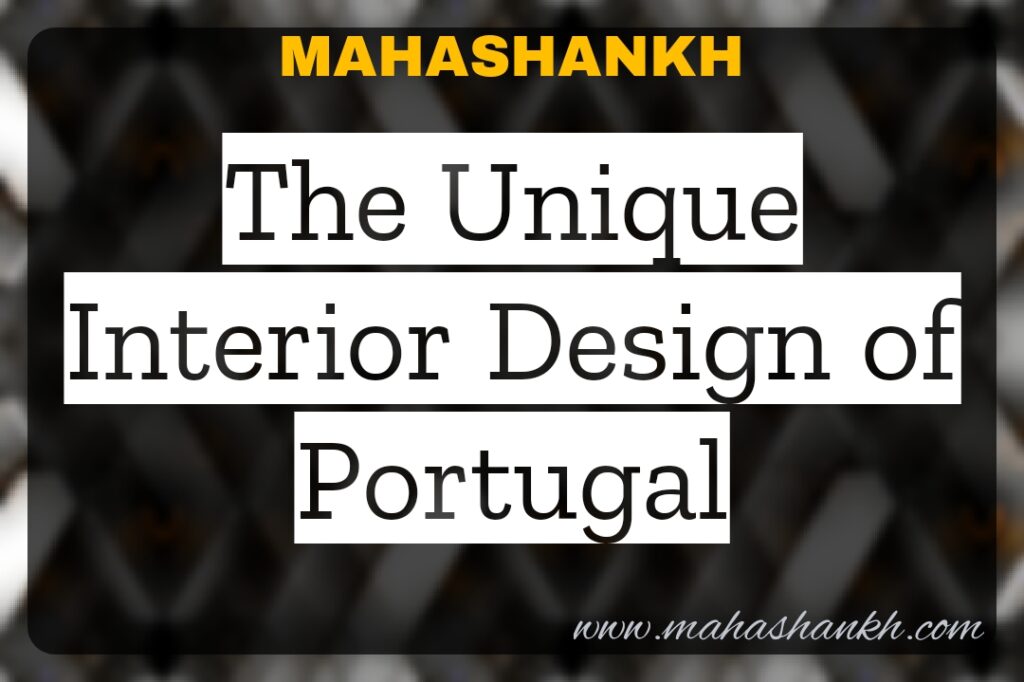
Portugal, with its rich history and cultural tapestry, has given rise to a captivating interior design aesthetic that seamlessly blends Moorish and Mediterranean influences. From the vibrant streets of Lisbon to the picturesque Algarve coast, Portuguese interiors showcase a distinctive style characterized by colorful tiles, hand-painted ceramics, and rustic charm. In this article, we’ll delve into the key elements that define the enchanting and eclectic interior design of Portugal.
Moorish and Mediterranean Fusion:
Portugal’s interior design is a testament to the country’s historical interactions with Moorish and Mediterranean cultures. The Moorish influence is evident in the intricate patterns, geometric designs, and arched doorways that grace many Portuguese interiors. This fusion creates a unique visual language that is both exotic and familiar, offering a harmonious blend of two distinct cultural aesthetics.
Colorful Tiles (Azulejos):
One of the most iconic features of Portuguese interior design is the extensive use of azulejos, colorful ceramic tiles that adorn walls, floors, and architectural elements. These tiles, often hand-painted with intricate patterns and scenes, tell stories of Portugal’s history and cultural heritage. Azulejos bring a burst of color and artistic expression to interiors, transforming spaces into vibrant works of art.
Hand-Painted Ceramics:
Hand-painted ceramics are another hallmark of Portuguese interior design. From traditional pottery to decorative plates and tiles, these artisanal pieces showcase the country’s craftsmanship and artistic flair. Whether displayed as wall art or used as functional elements in kitchens and dining areas, hand-painted ceramics add a touch of authenticity and charm to Portuguese interiors.
Rustic Charm and Natural Materials:
Portuguese interiors often feature a rustic and relaxed charm, emphasizing the use of natural materials. Stone and wood play prominent roles, contributing to a warm and inviting atmosphere. Exposed wooden beams, terra cotta floors, and textured walls create a connection to the country’s rural landscapes, evoking a sense of timelessness and authenticity.
Traditional Furnishings and Decor:
Traditional Portuguese furnishings are characterized by a blend of simplicity and ornate detailing. Carved wooden furniture, wrought-iron fixtures, and upholstered pieces adorned with vibrant patterns are common in Portuguese homes. These elements add a sense of nostalgia and cultural richness to interiors, paying homage to Portugal’s historical legacy.
Mosaic Patterns and Textiles:
Mosaic patterns, inspired by Moorish design, often find their way into Portuguese interiors, adorning floors, walls, and even furniture. These intricate patterns create a sense of visual interest and complexity. Textiles, including embroidered linens and patterned rugs, contribute to the overall tapestry of Portuguese design, offering both comfort and a pop of color.
Courtyards and Outdoor Living:
Portuguese interior design seamlessly extends into outdoor spaces, with a focus on creating inviting courtyards and terraces. Outdoor living is embraced, and interiors often open up to alfresco dining areas adorned with colorful tiles, potted plants, and wrought-iron furnishings. The connection between indoor and outdoor spaces reflects the country’s Mediterranean climate and laid-back lifestyle.
Portuguese interior design is a captivating fusion of Moorish and Mediterranean influences, creating spaces that are vibrant, culturally rich, and inherently inviting. The use of colorful tiles, hand-painted ceramics, rustic charm, and traditional elements weaves a narrative that celebrates Portugal’s heritage and artistic prowess. Whether wandering through historic palaces or stepping into quaint coastal homes, the enchanting interiors of Portugal leave a lasting impression, inviting individuals to experience the beauty and diversity of the country’s design aesthetic.
The Pinnacle of Urban Elegance: Interior Design in Singapore

Singapore, a bustling metropolis known for its cutting-edge architecture and cosmopolitan lifestyle, has cultivated a distinctive interior design aesthetic that embodies modernity, sophistication, and a seamless blend of technology and luxury. From sleek skyscraper apartments to chic commercial spaces, Singaporean interior design showcases a commitment to clean lines, high-tech elements, and the use of luxurious materials. In this article, we’ll explore the key features that define the sleek and contemporary interior design of Singapore.
Modern, Cosmopolitan Aesthetic:
Singapore’s interior design reflects the city-state’s position as a global hub of commerce and culture. The aesthetic is decidedly modern and cosmopolitan, characterized by clean lines, open spaces, and a neutral color palette. Interiors often exude a sense of sophistication and urban chic, creating an atmosphere that is both elegant and welcoming.
High-Tech Elements:
At the forefront of Singaporean interior design is a seamless integration of high-tech elements. Smart home technologies, automated lighting systems, and state-of-the-art audiovisual systems are common features in many residences. The incorporation of these technologies not only enhances the functionality of spaces but also aligns with Singapore’s reputation as a technologically advanced city.
Clean Lines and Minimalism:
Minimalism is a key design principle in Singaporean interiors. Clean lines, uncluttered spaces, and a focus on essential elements contribute to a sense of order and simplicity. Furniture pieces often feature sleek designs, and the overall aesthetic is one of understated elegance. This minimalist approach not only complements the modern architecture prevalent in Singapore but also creates an atmosphere of serenity and sophistication.
Luxurious Materials:
Luxury is a defining characteristic of Singaporean interior design. High-quality, luxurious materials are carefully selected to elevate the overall aesthetic of spaces. From marble and granite to high-gloss finishes and sumptuous textiles, the use of opulent materials adds a touch of glamour to both residential and commercial interiors. The emphasis on quality craftsmanship and luxurious details creates an environment of refined elegance.
Open Concept Living:
The concept of open living spaces is embraced in Singaporean interior design, promoting a sense of connectivity and fluidity between different areas of the home. Open kitchens, dining areas, and living spaces create an expansive feel, maximizing natural light and facilitating a seamless transition between indoor and outdoor living. This design philosophy not only enhances the overall sense of space but also encourages social interaction.
Biophilic Elements:
Despite the urban density, Singaporean interior design often incorporates biophilic elements to bring a touch of nature into living spaces. Indoor gardens, green walls, and strategically placed potted plants contribute to a sense of well-being and harmony with the environment. The integration of natural elements complements the city’s commitment to sustainability and green living.
Artistic Expressions and Statement Pieces:
Singaporean interiors often feature carefully curated art collections and statement pieces that serve as focal points within spaces. Sculptures, contemporary artworks, and designer furniture contribute to the overall aesthetic, showcasing a commitment to artistic expression and individuality. These elements add personality and uniqueness to Singaporean interiors.
The interior design of Singapore stands as a testament to the city-state’s modernity, technological prowess, and commitment to luxurious living. The sleek lines, high-tech elements, and use of opulent materials create interiors that are not only visually striking but also align with the cosmopolitan lifestyle embraced by Singaporeans. Whether in the heart of the Central Business District or in the luxurious residences of Sentosa Cove, Singapore’s interior design represents the pinnacle of urban elegance, where innovation, sophistication, and luxury converge to create spaces that are both functional and aesthetically inspiring.
A Tapestry of Cultures: Exploring the Rich Interior Design of South Africa
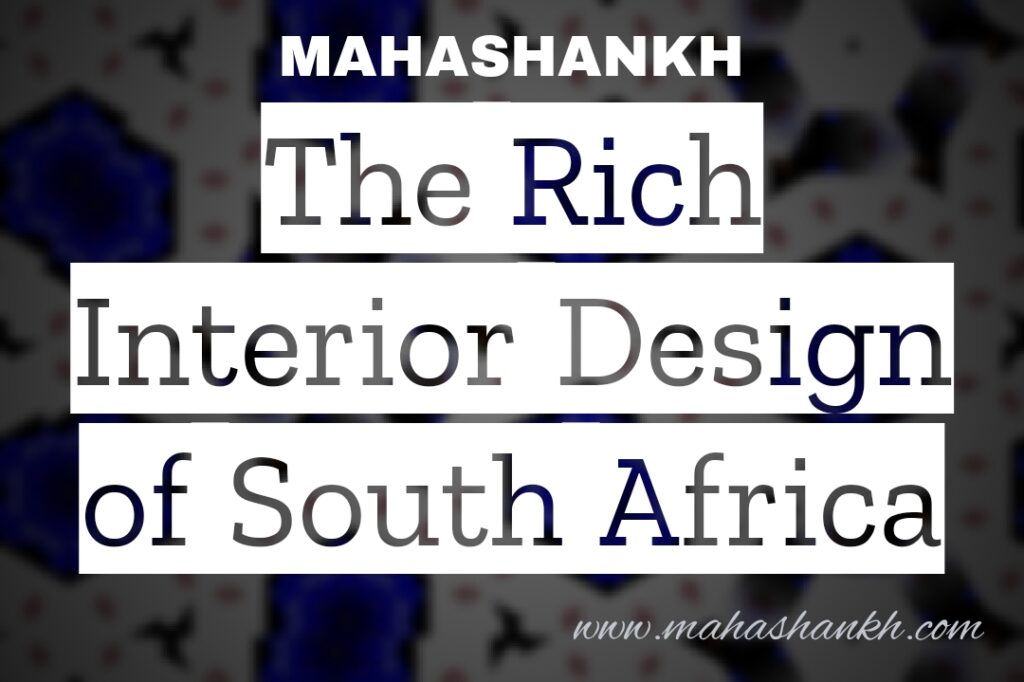
South Africa, a land of diverse landscapes and vibrant cultures, boasts an interior design aesthetic that is a harmonious blend of indigenous African influences, colonial architecture, and contemporary design elements. From the bustling cityscapes of Johannesburg to the serene landscapes of the Cape, South African interiors weave together a rich tapestry of history, culture, and modern sensibilities. In this article, we’ll delve into the key features that define the unique and diverse interior design of South Africa.
African Influences:
At the heart of South African interior design is a celebration of its indigenous cultures. Incorporating African influences, homes often feature traditional patterns, tribal art, and handcrafted artifacts. Colors inspired by the landscapes—earthy tones, deep reds, and vibrant blues—are commonly used to create spaces that reflect the warmth and vibrancy of the continent.
Colonial Architecture:
South Africa’s colonial past has left an indelible mark on its architecture and interior design. Many homes, particularly in Cape Dutch and Victorian styles, showcase elements of colonial design. High ceilings, sash windows, and verandas are characteristic features that seamlessly blend with the local surroundings. Colonial-inspired furniture, with its elegant lines and rich wood finishes, adds a touch of sophistication to interiors.
Contemporary Design Elements:
South African interior design is not bound by tradition alone; it embraces modern design principles with a focus on functionality and comfort. Contemporary furniture, clean lines, and open-plan living are common features in many urban homes. This fusion of traditional and modern design elements creates interiors that are both timeless and relevant to the needs of today’s lifestyle.
Natural Materials:
The use of natural materials is a prominent feature in South African interior design. From the warm hues of locally sourced wood to the rugged textures of stone and earth, natural materials connect interiors to the country’s diverse landscapes. This emphasis on authenticity and sustainability aligns with the global trend towards eco-friendly design.
Textiles and Patterns:
South African interiors often showcase a rich array of textiles and patterns. Bold prints, tribal motifs, and intricately woven textiles add depth and character to living spaces. Whether in the form of upholstery, throw pillows, or wall hangings, these textiles contribute to a sense of cultural richness and visual interest.
Earthy Color Palettes:
The color palette in South African interiors reflects the hues of the natural environment. Earthy tones such as warm browns, sandy beiges, and muted greens dominate, creating a connection to the landscapes that surround homes. These colors are not only aesthetically pleasing but also contribute to a sense of grounding and tranquility.
Outdoor Living Spaces:
Given the country’s temperate climate, South African interior design often extends seamlessly into outdoor living spaces. Patios, verandas, and garden spaces become natural extensions of the home, allowing residents to enjoy the beauty of the outdoors. Comfortable outdoor furniture, often crafted from local materials, transforms these spaces into inviting retreats.
Cultural Artifacts and Handcrafted Items:
South African interiors often feature a display of cultural artifacts and handcrafted items. From beaded jewelry and baskets to hand-carved wooden sculptures, these items showcase the country’s diverse artistic traditions. Incorporating these artifacts into interiors adds a layer of authenticity and cultural significance.
The interior design of South Africa is a captivating journey through time and culture. The blend of African influences, colonial architecture, and contemporary design elements creates a unique aesthetic that is reflective of the country’s diverse heritage. South African interiors are not just spaces; they are narratives that tell stories of resilience, creativity, and the beauty of a nation shaped by its people and landscapes. Whether in the heart of a bustling city or surrounded by the natural splendor of the countryside, South African interior design stands as a testament to the power of cultural fusion and the art of creating homes that are as diverse and vibrant as the nation itself.
Vibrant Elegance: The Allure of Spanish Interior Design
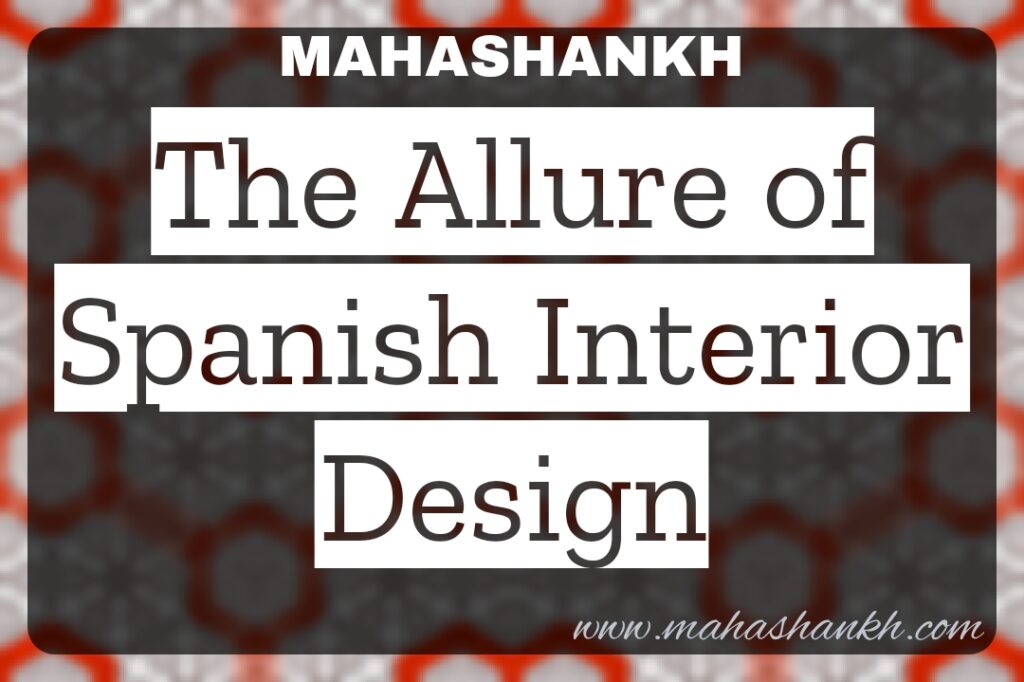
Spain, a country renowned for its rich history, diverse culture, and breathtaking landscapes, has given rise to a distinctive interior design aesthetic that is both bold and timeless. Spanish interiors are characterized by their fearless use of color, intricate tilework, and a captivating blend of Moorish, Baroque, and contemporary styles. In this article, we’ll explore the key features that define the vibrant elegance of Spanish interior design.
Bold Use of Color:
Spanish interior design is celebrated for its fearless approach to color. Bold and saturated hues such as deep reds, vibrant yellows, and rich blues are commonly used to infuse spaces with warmth and energy. These colors are inspired by the country’s sun-soaked landscapes and passionate culture, creating interiors that are both visually striking and emotionally resonant.
Intricate Tilework:
One of the most iconic features of Spanish interiors is the use of intricate tilework, particularly azulejos. These hand-painted ceramic tiles, often adorned with geometric patterns, floral motifs, and intricate scenes, add a touch of artistry to walls, floors, and even ceilings. Azulejos are a nod to Spain’s Moorish heritage and provide a unique and timeless element to Spanish interiors.
Blend of Moorish, Baroque, and Contemporary Styles:
Spanish interior design is a captivating fusion of influences from different historical periods. The legacy of Moorish architecture is evident in the use of arches, decorative tilework, and courtyard layouts. Baroque influences are reflected in ornate detailing, carved woodwork, and opulent furnishings. Contemporary elements, such as clean lines and modern furnishings, contribute to a design aesthetic that is both rooted in tradition and relevant to contemporary tastes.
Rustic and Textured Elements:
Spanish interiors often incorporate rustic and textured elements that add depth and character. Exposed wooden beams, wrought-iron fixtures, and stone surfaces create a sense of authenticity, connecting interiors to the natural materials found in the Spanish countryside. These textured elements contribute to a warm and inviting atmosphere.
Courtyards and Outdoor Living:
The Spanish love for outdoor living is evident in the design of traditional courtyards and patios. These spaces, adorned with lush greenery, colorful tiles, and bubbling fountains, become extensions of the interior. Outdoor living areas, whether in the form of a central courtyard or a sun-drenched terrace, provide a serene retreat for relaxation and social gatherings.
Ornate Furnishings and Decor:
Spanish interiors often feature ornate furnishings and decor that add a touch of luxury. Carved wooden furniture, upholstered pieces with intricate detailing, and decorative accessories contribute to the overall opulence of Spanish design. Antiques and traditional craftsmanship are highly valued, creating interiors that exude a sense of history and grandeur.
Play of Light and Shadow:
The play of light and shadow is an integral part of Spanish interior design. Large windows, open layouts, and strategically placed mirrors maximize natural light, creating spaces that are bright and inviting. The interplay of light and shadow enhances the intricate details of tilework and adds a dynamic quality to the overall design.
Cultural Artifacts and Ceramics:
Spanish interiors often showcase cultural artifacts, ceramics, and handcrafted items that reflect the country’s artistic heritage. From flamenco-inspired accessories to handmade pottery, these elements contribute to a sense of cultural richness and individuality in Spanish homes.
Spanish interior design is a celebration of color, history, and cultural diversity. The bold use of color, intricate tilework, and the fusion of Moorish, Baroque, and contemporary styles create interiors that are visually stunning and deeply rooted in the country’s heritage. Spanish homes are not just spaces; they are expressions of a passionate and vibrant culture, where the warmth of the Mediterranean sun and the echoes of history come together to create timeless and captivating living environments.
Timeless Simplicity: The Essence of Swedish Interior Design
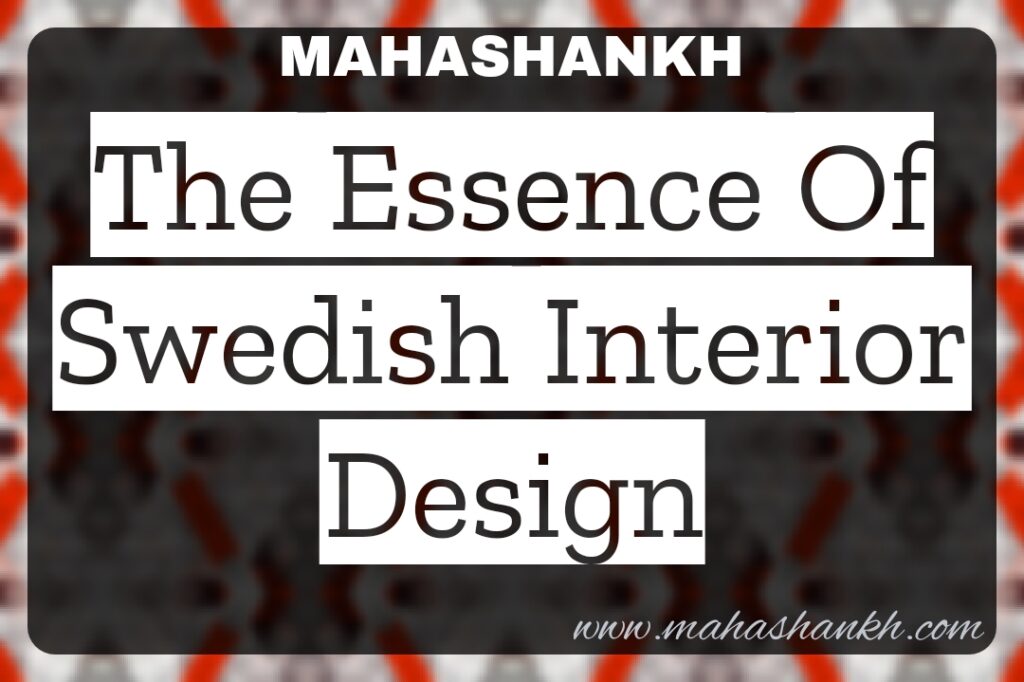
Sweden, a country known for its picturesque landscapes and progressive design sensibilities, has played a pioneering role in shaping the world of interior design, particularly through its contributions to the minimalist Scandinavian style. Swedish interiors are characterized by clean lines, natural materials, and functional furniture, creating spaces that prioritize simplicity, functionality, and a connection to nature. In this article, we’ll delve into the key elements that define the timeless simplicity of Swedish interior design.
Minimalist Scandinavian Design:
Swedish interior design is synonymous with the broader Scandinavian design ethos, which embraces minimalism as a fundamental principle. Clean lines, uncluttered spaces, and a neutral color palette are central to Swedish interiors. This minimalist approach creates an atmosphere of calm and serenity, allowing the beauty of each design element to shine through.
Light and Airy Spaces:
Natural light plays a pivotal role in Swedish interior design. Homes are often designed to maximize the intake of sunlight, with large windows and open layouts contributing to an airy and bright atmosphere. Light-colored walls and reflective surfaces further enhance the sense of spaciousness, creating interiors that feel welcoming and harmonious.
Natural Materials:
A commitment to using natural materials is a hallmark of Swedish interior design. Wood, in particular, is a dominant feature, with light-toned woods such as pine, birch, and beech frequently used. Natural stone, leather, and textiles like wool and linen add warmth and texture to spaces. The use of these materials not only brings a touch of nature indoors but also contributes to the overall aesthetic of simplicity and authenticity.
Functional Furniture:
Swedish design places a strong emphasis on functional furniture that seamlessly integrates into daily life. Furniture pieces are often characterized by clean and simple designs, with a focus on practicality and usability. Multi-functional pieces, such as storage solutions that also serve as seating, exemplify the Swedish commitment to efficient use of space.
Neutral Color Palette:
The color palette in Swedish interiors tends to be neutral and soothing. Whites, grays, and muted tones dominate, providing a versatile backdrop for the integration of natural materials and occasional pops of color. The restrained color scheme contributes to a sense of tranquility and timelessness.
Cozy Textiles:
Despite the minimalist aesthetic, Swedish interiors are far from cold or sterile. The incorporation of cozy textiles, such as soft rugs, plush throws, and textured cushions, adds warmth and comfort to spaces. These textiles not only contribute to a sense of coziness but also create visual interest within the restrained design palette.
Emphasis on Sustainability:
Swedish design has a longstanding commitment to sustainability, and this is reflected in the choice of materials and design practices. Many Swedish interiors feature eco-friendly materials, and there’s a growing trend towards upcycling and repurposing vintage furniture. The emphasis on sustainability aligns with Sweden’s broader cultural values of environmental responsibility.
Integration of Nature:
A strong connection to nature is a central theme in Swedish interior design. Indoor plants, natural motifs, and even large potted trees are commonly found in Swedish homes. The integration of nature into interiors not only enhances the overall aesthetic but also promotes a sense of well-being and harmony with the environment.
Swedish interior design is a testament to the power of simplicity, functionality, and a deep connection to nature. The clean lines, natural materials, and functional furniture create spaces that are both aesthetically pleasing and highly livable. Whether in a sleek urban apartment or a charming countryside cottage, the essence of Swedish interior design transcends trends, offering a timeless and enduring approach to creating harmonious living environments.
The Harmony of Tradition and Modernity: Thai Interior Design Unveiled

Thailand, a land of rich cultural heritage and breathtaking landscapes, has cultivated a unique interior design aesthetic that seamlessly blends traditional elements with modern influences. Thai interiors are characterized by intricate carvings, sumptuous silk textiles, and vibrant splashes of color, creating spaces that resonate with the country’s history, spirituality, and contemporary dynamism. In this article, we’ll delve into the key elements that define the captivating blend of tradition and modernity in Thai interior design.
Intricate Carvings and Woodwork:
Thai interior design is often distinguished by the exquisite craftsmanship of intricate carvings and woodwork. Elaborately carved wooden furniture, decorative panels, and architectural elements showcase a deep appreciation for traditional Thai artistry. The motifs often draw inspiration from nature, mythology, and religious symbols, creating a sense of cultural richness and storytelling within the interiors.
Silk Textiles and Ornate Fabrics:
Silk holds a special place in Thai design, and it is prominently featured in textiles and decor. Traditional Thai silk, with its lustrous sheen and vibrant colors, is used for upholstery, drapery, and decorative elements. Ornate fabrics featuring intricate patterns, often inspired by nature and historical motifs, add a luxurious touch to furnishings, transforming spaces into visually stunning and tactile environments.
Colorful Accents Inspired by Nature:
A vibrant color palette inspired by the natural beauty of Thailand is a defining feature of Thai interiors. Rich reds, deep golds, lush greens, and serene blues are commonly used to evoke the hues of Thai landscapes. These colors are strategically incorporated into textiles, wall coverings, and decor, infusing spaces with energy and a sense of the exotic.
Traditional Thai Furniture:
Traditional Thai furniture reflects a commitment to both form and function. Low-slung seating, intricately carved wooden pieces, and foldable screens are common elements that showcase a blend of functionality and cultural aesthetics. Furniture often serves dual purposes, providing both comfort and an opportunity for artistic expression through detailed craftsmanship.
Buddhist Influences and Spiritual Spaces:
Buddhist influences play a significant role in Thai interior design, especially in residential spaces. Altars, statues, and spiritual corners are common features, creating areas for meditation and reflection. Traditional Thai houses often include a designated space for a spirit house, honoring ancestral spirits and contributing to a harmonious living environment.
Open and Airy Layouts:
Thai interiors often embrace open and airy layouts, allowing for a seamless flow between indoor and outdoor spaces. Large windows, sliding doors, and expansive verandas contribute to a sense of connectedness with the natural surroundings. This design choice not only enhances the visual appeal of spaces but also promotes a comfortable and tropical living experience.
Traditional Thai Arts and Crafts:
The art of traditional Thai crafts, such as pottery, weaving, and metalwork, is often celebrated in interior design. Handcrafted items, whether displayed as standalone pieces or incorporated into functional decor, add authenticity and a sense of cultural identity to Thai interiors.
Modern Influences:
While rooted in tradition, Thai interior design also embraces modern influences. Contemporary furniture, sleek lines, and innovative design elements are seamlessly integrated into traditional spaces, creating a harmonious balance between the old and the new. This infusion of modernity allows for a dynamic and evolving design landscape in Thailand.
Thai interior design is a celebration of the country’s rich cultural tapestry, blending traditional elements with a contemporary sensibility. The intricate carvings, silk textiles, and vibrant colors contribute to spaces that are both visually stunning and deeply rooted in Thai heritage. As Thailand continues to evolve in the modern world, its interior design ethos serves as a testament to the enduring beauty of tradition and the limitless possibilities of cultural fusion.
Timeless Elegance: Unveiling the Ottoman-Inspired Opulence of Turkish Interior Design
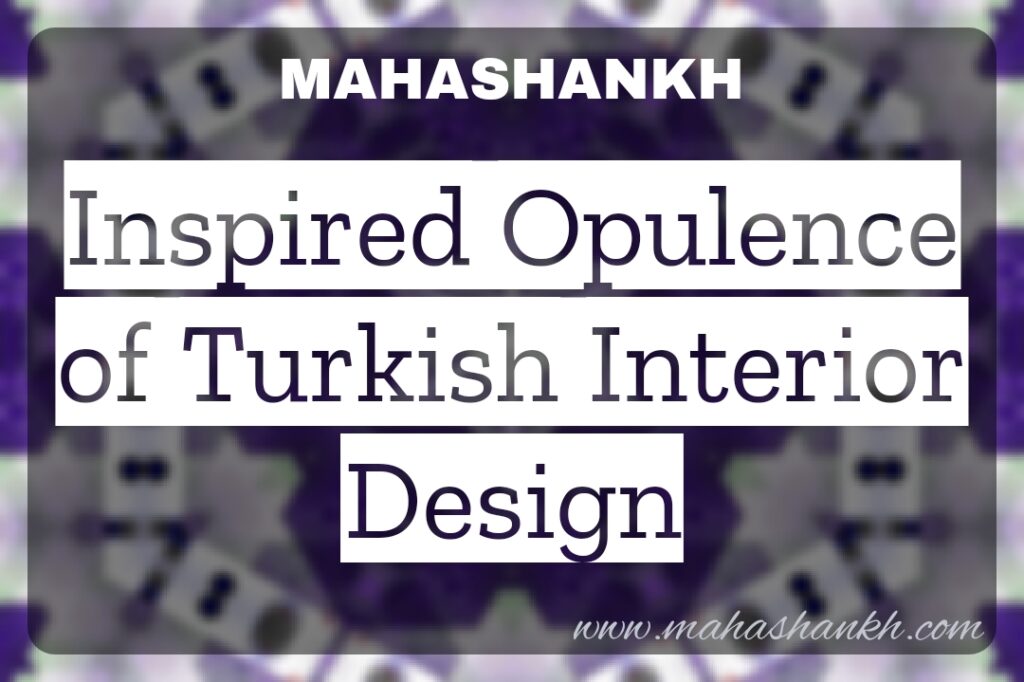
Turkey, a country where history, culture, and beauty converge, has crafted a distinctive interior design aesthetic that draws inspiration from its illustrious Ottoman past. Turkish interiors are characterized by opulent details, rich textiles, handcrafted woodwork, and intricate tilework, creating spaces that resonate with a sense of timeless elegance. In this article, we’ll explore the key elements that define the opulence and sophistication of Turkish interior design.
Ottoman-inspired Opulence:
The Ottoman Empire, with its grandeur and opulence, continues to influence Turkish interior design. Spaces are adorned with luxurious furnishings, sumptuous fabrics, and decorative elements reminiscent of the empire’s rich architectural heritage. The design ethos celebrates the intricate craftsmanship and cultural legacy of the Ottomans, creating interiors that exude a regal and timeless allure.
Rich Textiles and Carpets:
Turkish interiors are known for their lavish use of textiles, particularly intricate carpets and rugs. Traditional Turkish carpets, with their ornate patterns and vibrant colors, are often used as centerpieces, adding warmth and a sense of grandeur to living spaces. Luxurious fabrics like silk and velvet are also incorporated into upholstery, draperies, and decorative cushions, enhancing the overall opulence.
Handcrafted Woodwork and Inlay:
Handcrafted woodwork is a hallmark of Turkish interior design, reflecting a commitment to artisanal craftsmanship. Elaborate wooden furniture, intricately carved panels, and decorative screens showcase the mastery of Turkish woodworkers. Inlay techniques, such as marquetry and mother-of-pearl inlay, add a level of sophistication to furniture pieces, creating visually stunning and culturally rich interiors.
Intricate Tilework and Mosaics:
Tilework, particularly the use of intricate ceramic tiles known as “çini,” is a distinctive feature in Turkish interiors. These tiles often depict geometric patterns, floral motifs, and historical scenes, creating a tapestry of artistry on walls, floors, and even ceilings. Mosaic designs, inspired by ancient traditions, are also prevalent, adding a touch of the Byzantine and Ottoman eras to contemporary Turkish spaces.
Ornate Lighting Fixtures:
Lighting plays a crucial role in Turkish interior design, with ornate fixtures contributing to the overall opulence. Chandeliers, lanterns, and pendant lights adorned with colorful glass and intricate metalwork are common features. These fixtures not only provide illumination but also serve as artistic statements that enhance the regal atmosphere of Turkish interiors.
Domed Ceilings and Arches:
Architectural elements such as domed ceilings and arches are reminiscent of Ottoman design and are frequently integrated into Turkish interiors. These features create a sense of grandeur and add a touch of historical authenticity to spaces. Arched doorways and windows, in particular, contribute to the overall aesthetic, offering a seamless flow between different areas of the home.
Earthy Color Palette with Jewel Tones:
The color palette in Turkish interiors is often inspired by the natural landscapes of the region. Earthy tones such as terracotta, warm browns, and muted greens provide a grounding effect. Additionally, jewel tones such as deep blues, emerald greens, and ruby reds add a sense of richness and sophistication, creating a palette that reflects both the earthy and opulent aspects of Turkish design.
Courtyards and Gardens:
In line with the Turkish tradition of embracing outdoor living, many homes feature courtyards and gardens. These outdoor spaces, often adorned with fountains, lush greenery, and tiled pathways, serve as tranquil retreats. Courtyards become extensions of the interior, providing a seamless transition between the opulence inside and the natural beauty outside.
Turkish interior design is a captivating journey through time, where the opulence of the Ottoman Empire continues to inspire contemporary aesthetics. The interplay of rich textiles, handcrafted woodwork, intricate tilework, and ornate lighting creates interiors that are not just spaces but expressions of cultural legacy and timeless elegance. As Turkey continues to evolve in the modern era, its interior design ethos stands as a testament to the enduring allure of history, craftsmanship, and the art of creating living spaces that resonate with opulence and sophistication.
The Mosaic of Styles: Exploring the Diverse Interior Design of the United Kingdom

The United Kingdom, a land steeped in history and culture, has fostered a rich tapestry of interior design styles that range from the timeless elegance of traditional English country houses to the contemporary chic of urban lofts. Reflecting the diverse tastes and influences that shape its regions, the interior design of the UK seamlessly blends heritage with modernity. In this article, we’ll embark on a journey through the varied styles that define the interiors of this culturally dynamic nation.
Traditional English Country Houses:
One of the most iconic and enduring styles in the United Kingdom is the traditional English country house aesthetic. These interiors are characterized by classic elegance, refined furnishings, and a sense of warmth. Rich, dark woods, antique furniture, and plush upholstery are common features. The use of floral patterns, fine china, and historical art pieces contribute to a sense of timeless charm that harks back to the grandeur of stately homes and manors.
Victorian Opulence:
The Victorian era left an indelible mark on the UK’s design landscape, and this influence is evident in many interiors. Victorian-style homes boast opulent details such as intricate moldings, ornate chandeliers, and bold wallpaper patterns. Dark wood furniture with elaborate carvings, plush velvet upholstery, and jewel-toned color palettes are quintessential elements that capture the lavishness of the Victorian era.
Georgian Symmetry:
Georgian architecture and design principles have significantly shaped the aesthetic of many UK homes. Symmetry, proportion, and classical motifs define Georgian interiors. Neutral color schemes, light-filled spaces, and a focus on balance create an atmosphere of timeless elegance. Furniture with straight lines and refined details, such as claw-footed tables and Chippendale chairs, are often featured in Georgian-inspired interiors.
Contemporary Urban Lofts:
In contrast to the traditional styles, the United Kingdom is also home to a vibrant contemporary design scene, particularly in urban areas. Modern lofts and city apartments often feature open floor plans, exposed brick walls, and industrial elements such as metal beams and concrete floors. Minimalist furniture, clean lines, and a neutral color palette characterize these urban spaces, creating a sleek and cosmopolitan atmosphere.
Scottish Heritage:
Scotland, with its distinct cultural identity, contributes its own unique style to the UK’s interior design landscape. Traditional Scottish interiors often showcase tartan patterns, rich woods, and a cozy ambiance. Elements such as stone fireplaces, woolen textiles, and antler decorations pay homage to Scotland’s rugged landscapes and storied history, creating homes that are both comfortable and deeply rooted in tradition.
Eclectic Bohemian:
The UK’s design scene is also marked by a growing trend toward eclectic bohemian interiors. Drawing inspiration from various cultures and time periods, eclectic designs feature a mix of colors, patterns, and textures. Vintage furniture, global artifacts, and bold, mismatched elements contribute to a style that is both free-spirited and highly individualistic.
Nordic Minimalism:
In recent years, Nordic minimalism has gained popularity in the UK, influenced by Scandinavian design principles. Clean lines, a neutral color palette, and a focus on functionality define Nordic-inspired interiors. Light woods, simple furnishings, and an emphasis on creating clutter-free spaces contribute to an aesthetic that is both modern and cozy.
Coastal and Nautical Influences:
Given the UK’s extensive coastline, coastal and nautical themes are prevalent in many seaside homes. Blue and white color schemes, natural textures like driftwood and rope, and maritime-inspired decor elements create a breezy and relaxed atmosphere. Large windows often frame views of the sea, bringing the outdoors into these coastal interiors.
The interior design of the United Kingdom is a reflection of its rich and varied cultural heritage, offering a mosaic of styles that cater to diverse tastes and preferences. From the classic elegance of English country houses to the contemporary vibes of urban lofts, each style tells a story of history, individuality, and the dynamic fusion of tradition and modernity. Whether wandering through the corridors of a Georgian townhouse, relaxing in a bohemian apartment, or embracing the coastal charm of a seaside cottage, the interiors of the United Kingdom invite individuals to explore the multifaceted beauty that defines this culturally rich nation.
A Symphony of Styles: Navigating the Diverse Interior Design of the United States

The United States, a vast and culturally diverse nation, boasts an interior design landscape that mirrors its eclectic history and influences. From the laid-back coastal bungalows of California to the sleek penthouses of New York City, American interior design is a captivating tapestry of styles that reflects the nation’s melting pot ethos. In this article, we’ll embark on a journey through the varied design aesthetics that define the interiors of the United States.
Coastal California Bungalows:
In California, particularly along the coast, interior design takes on a distinctively laid-back and beachy vibe. Coastal California bungalows often feature light, airy spaces with a focus on natural light. Whitewashed walls, large windows, and casual, comfortable furnishings contribute to a relaxed atmosphere. Nautical elements, such as sea-inspired colors and beach-themed decor, enhance the coastal charm of these homes.
Mid-Century Modern:
The mid-century modern design movement, which flourished in the mid-20th century, has left an indelible mark on American interior design. Characterized by clean lines, organic shapes, and a blend of form and function, mid-century modern interiors are still popular across the country. Iconic furniture pieces, such as Eames chairs and Noguchi tables, often find a place in these spaces, creating a timeless and sophisticated aesthetic.
Southern Comfort:
In the southern United States, particularly in states like Georgia and the Carolinas, interior design often embraces a sense of Southern comfort and hospitality. Traditional elements such as plantation shutters, classic antiques, and richly upholstered furniture create spaces that are both elegant and inviting. Warm color palettes, gingham patterns, and front porch living contribute to the timeless charm of Southern interiors.
Industrial Urban Lofts:
In major cities like New York, Chicago, and Los Angeles, industrial urban lofts have become synonymous with modern city living. Exposed brick walls, open floor plans, and industrial elements like metal beams and ductwork define these spaces. Sleek and minimalist furniture, often with a focus on functionality, contributes to the contemporary and edgy feel of urban loft interiors.
New England Colonial Elegance:
The northeastern region of the United States, particularly in New England, is home to interiors that exude colonial elegance. Timeless and refined, New England Colonial interiors often feature classic furnishings, detailed woodwork, and a sophisticated color palette. Rich textiles, such as plaid and floral patterns, add warmth and character to these traditional homes.
Southwest Desert Vibes:
In states like Arizona and New Mexico, interior design draws inspiration from the desert landscape. Southwest interiors often showcase earthy tones, natural materials like adobe and wood, and Native American-inspired patterns. Talavera tiles, vibrant textiles, and rustic furnishings contribute to a warm and cozy ambiance that reflects the cultural richness of the region.
Modern Farmhouse:
A popular and enduring trend in American interior design is the modern farmhouse style. This aesthetic blends the charm of traditional farmhouses with contemporary elements. White shiplap walls, barn doors, and rustic accents coexist with modern fixtures and clean lines. The result is a comfortable and stylish interior that captures the essence of rural living with a modern twist.
Eclectic Urban Boho:
In urban settings, particularly in neighborhoods known for their artistic communities, eclectic urban boho interiors thrive. These spaces embrace a mix of patterns, textures, and global influences. Vintage finds, handmade crafts, and a vibrant color palette create homes that reflect the individuality and creativity of their inhabitants.
The interior design of the United States is a kaleidoscope of styles, each telling a unique story of regional influences, cultural heritage, and individual preferences. From the breezy coastal aesthetics of California to the urban chic of New York City, American interiors showcase the nation’s ability to seamlessly blend tradition with innovation. This diverse tapestry of styles not only reflects the vastness of the country but also celebrates the creativity and adaptability that define the American design ethos. Whether traversing the historic streets of Boston or experiencing the vibrant energy of Los Angeles, the interiors of the United States invite exploration and appreciation for the myriad ways in which design flourishes in this diverse and dynamic nation.
Fusion Harmony: The Enchanting Blend of French Colonial and Vietnamese Design

Vietnam, a land of timeless beauty and cultural richness, has forged a unique identity in interior design by seamlessly blending French colonial influences with traditional Vietnamese elements. This captivating fusion results in spaces that exude an elegant yet warm ambiance, featuring natural materials, dark wood accents, and vibrant pops of color. In this article, we’ll explore the distinctive features that define the enchanting tapestry of Vietnamese interior design.
Embracing French Colonial Elegance:
Vietnam’s colonial past, particularly the French influence, has left an enduring mark on its architecture and design. French colonial elements, characterized by graceful proportions and ornate detailing, are woven into the fabric of Vietnamese interiors. High ceilings, large windows, and intricate moldings reflect the elegance of French design, creating a sense of grandeur that complements the country’s rich cultural tapestry.
Traditional Vietnamese Craftsmanship:
While French colonial aesthetics play a significant role, Vietnamese interior design remains deeply rooted in its cultural heritage. Traditional craftsmanship is celebrated through intricate wood carvings, lacquerware, and silk textiles. These elements, infused with symbolism and cultural significance, add authenticity to the interiors, connecting them to Vietnam’s rich artistic traditions.
Natural Materials and Earthy Tones:
Vietnamese interiors have a profound connection to nature, emphasizing the use of natural materials. Dark wood, such as teak and rosewood, is a predominant feature, contributing warmth and a timeless quality to spaces. Earthy tones, inspired by the lush landscapes of Vietnam, create a soothing backdrop, allowing the beauty of natural materials to take center stage.
Dark Wood Accents and Furniture:
Dark wood accents are a hallmark of Vietnamese interior design, offering a sense of sophistication and depth. From intricately carved wooden furniture to dark wood paneling and flooring, these accents add a touch of opulence while maintaining a connection to nature. The use of dark wood contributes to a harmonious balance between classic elegance and rustic charm.
Vibrant Pops of Color:
Vietnamese interiors come alive with vibrant pops of color that pay homage to the country’s lively spirit. Rich hues inspired by traditional Vietnamese art and cultural symbolism infuse spaces with energy. Deep reds, lush greens, and golden yellows are often incorporated into textiles, artwork, and decorative accessories, creating a dynamic and visually striking atmosphere.
Silk Textiles and Embroidery:
The art of silk weaving and embroidery holds a revered place in Vietnamese design. Silk textiles, with their luxurious feel and intricate patterns, add a layer of refinement to interiors. Embroidered motifs, often depicting scenes from nature or cultural symbols, showcase the skillful craftsmanship that has been passed down through generations, creating textiles that are both artful and functional.
Courtyards and Tranquil Retreats:
Vietnamese interior design often incorporates the concept of open courtyards and tranquil retreats. Courtyards, adorned with lush greenery, water features, and traditional sculptures, become serene havens within homes. These outdoor-inspired spaces contribute to a sense of balance and harmony, creating a seamless connection between the indoors and the natural world.
Mingling of Antiques and Modern Pieces:
Vietnamese interiors effortlessly blend the old with the new, creating a harmonious fusion of styles. Antique furniture pieces coexist with modern designs, showcasing a design philosophy that embraces the continuity of tradition in a contemporary context. This mingling of antiques and modern elements adds depth and character to Vietnamese interiors.
Cultural Artifacts and Decor:
Vietnamese interiors often showcase a collection of cultural artifacts and decor. Traditional artworks, ceremonial objects, and symbolic elements contribute to the cultural richness of spaces. These artifacts tell stories of Vietnamese history, folklore, and spirituality, creating interiors that are not just aesthetically pleasing but also culturally significant.
Vietnamese interior design is a celebration of cultural convergence, where the elegance of French colonial influences seamlessly intertwines with the timeless beauty of traditional Vietnamese elements. The use of natural materials, dark wood accents, and vibrant pops of color creates interiors that are not only visually enchanting but also deeply reflective of Vietnam’s diverse cultural heritage. In the homes and spaces of Vietnam, the fusion of styles transcends aesthetics, becoming a testament to the nation’s ability to embrace the past while charting a course towards a harmonious and culturally rich future.
1 to 15 on interior design countries list – INTERIOR DESIGN
source: Google




